This section covers some of the most in-demand medical professions.
If you want to become a physician, a surgeon, a nurse, or a medical professional in a different field, we invite you to read further to find out more about your career path.

How to Become an Anesthesiologist
An anesthesiologist is a preoperative physician who specializes in the administration, dosage, monitoring, and after effects of local and general…

How to Become an Audiologist
Audiologists are professionals who are specialized in the ears, balance and possible hearing loss. These professionals use advanced technology and…

How to Become an Autopsy Technician
Do you find yourself intrigued by the human body, while your friends are squeamish? Do you love all things scientific…

How to Become a Cancer Researcher
A Cancer Researcher’s professional life revolves around Cancer: a disease caused by the abnormal reproduction of a single cell. Cancer…

How to Become a Cardiologist
Are you a person that enjoys to have excitement and challenging experiences everyday while helping others through healthcare? If you…

How to Become a Cardiovascular Surgeon
Cardiovascular Surgeons are specialized doctors that are highly experienced in performing surgeries and operations to the cardiovascular system, including the…
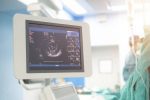
How to Become a Cardiovascular Technician
Working as a cardiovascular technician can be an exciting and rewarding career in the field of cardiology. A cardiovascular technician…
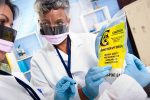
How to Become a Chemotherapy Technician
Chemotherapy Technicians are health care professionals who are experienced working with a variety of chemotherapy drugs used in a therapeutic…

How to Become a Child Psychiatrist
A Child Psychiatrist is a Board approved and certified professional that provides mental evaluations, counseling and medical prescriptions to their…

How to Become a Clinical Geneticist
Clinical Geneticists are professionals who work with patients and individuals who have been diagnosed with a genetic disease or ailment….

How to Become a Clinical Laboratory Technician
Clinical Laboratory Technicians work in the health care industry performing tests on bodily fluids and cells in order to help…

How to Become Clinical Researcher
According to CNN Money, the Clinical Research profession is one of the best jobs in America, landing at the number…

How to Become a Dental Hygienist
A dental hygienist provides assistance to a dentist in the care of their patients. They will help to diagnose and…

How to Become a Dental Technician
Dental Technicians work in conjunction with dentists in order to help repair any problems with a person’s teeth. Dental Technicians…

How to Become a Dentist
A dentist looks after the oral hygiene of their patients, both preventing and treating diseases of the gums, teeth, and…

How to Become a Dermatologist
A simple fact of life is that since people have skin there will always be a need for dermatology professionals…
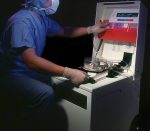
How to Become a Dialysis Technician
Dialysis Technicians help provide services to patients whose kidneys aren’t able to perform their normal functions. Healthy kidneys play an…

How to Become a Doctor
The role of a doctor is complex, challenging, and ultimately rewarding. When you become a doctor, you will be working…
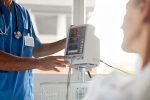
How to Become an EKG Technician
Do you have the desire to lend a helping hand to others? Are you intrigued by the fast growing medical…

How to Become an Embalmer
Embalmers are professionals who have direct contact with deceased bodies after they have been released by a coroner, hospital or…

How to Become an Emergency Room Doctor
An Emergency Room Doctor is a physician that is responsible for providing immediate medical attention to patients seeking health care…

How to Become an Emergency Room Nurse
An Emergency Room Nurse is an RN (Registered Nurse) that is specialized in providing health care to individuals who are…

How to Become an EMT
An EMT, known as an emergency medical technician, provides medical assistance to people in emergency situations. They also transport people…

How to Become an Endocrinologist
An Endocrinologist diagnoses and treats hormone level disorders caused by malfunctioning of endocrine glands in the patients. To become an…

How to Become a Forensic Assistant
A Forensic Assistant’s main duty is to provide support and assistance to leading professionals such as medical examiners, forensic doctors…

How to Become a Forensic Pathologist
Forensic Pathologists, also known as Medical Examiners, are experts who determine the cause of death for individuals who have died…

How to Become a Gastroenterologist
A Gastroenterologist is a physician that specializes in the human digestive system. This specialization includes diagnosing and treating a variety…

How to Become a Genetic Counselor
Genetic Counselors work with individuals seeking assistance in determining whether their genes are predisposed to a variety of inherited diseases…

How to Become a Geneticist
A geneticist is a specialist in the field of genes and heredity. A geneticist has a background in science, usually…

How to Become a Gynecologist
Gynecologists specialize in treating women patients. These doctors are educated and familiar with the female body and use that experience…

How to Become a Health Technician
Health Technician is an umbrella term used to define several specialized positions in the healthcare field. These professionals play a…

How to Become a Healthcare Administrator
Healthcare Administrators are professionals who are experienced in managing healthcare facilities or departments. The facilities these professionals manage can range…

How to Become a Hematologist
Hematologists are physicians who specialize in the study of blood and the treatment of any blood diseases. In addition, they…

How to Become a Hospice Nurse
Hospice Nurses provide the same type of care that general Registered Nurses do with one major difference; they solely work…

How to Become an Immunologist
Immunologists are experienced doctors who specialize in diseases affecting the immune system. Their knowledge is used to help identify and…

How to Become a Kinesiologist
Kinesiologists are health professionals who have an extensive background in the human body, how it moves and responds to different…

How to Become a Labor and Delivery Nurse
A Labor and Delivery Nurse is a Registered Nurse who specializes in Labor and Delivery. They assist with monitoring a…

How to Become a Laboratory Assistant
Laboratory Assistants, also referred to as Medical Laboratory Assistants (MLS) are professionals who work in the medical field preparing specimens…

How to Become a Medical Assistant
A Medical Assistant provides support to doctors and nurses by completing a range of medical as well as administrative tasks….

How to Become a Medical Biller
A medical biller, sometimes known as a medical coder, is an expert in the area of medical invoices, insurance claims,…

How to Become a Medical Coder
Medical Coders are professionals who are experienced in correctly capturing a medical encounter or appointment and preparing that information for…

How to Become a Medical Examiner
Medical Examiners are licensed physicians that perform autopsies on behalf of a city or county government. They are required to…

How to Become a Medical Lab Technician
Medical Lab Technicians have a very important job in a medical lab facility because their work helps with the diagnosis…

How to Become a Medical Records Clerk
A Medical Records Clerk handles all paperwork regarding patient information making sure to follow legal standards implemented by state or…

How to Become a Medical Researcher
The medical industry heavily relies on the specialized work provided by Medical Researchers. These professionals are at the forefront of…

How to Become a Medical Technician
Medical Technicians are healthcare professionals who perform the majority of their job duties in a medical laboratory. They are in…

How to Become a Medical Transcriptionist
Medical Transcriptionists are a part of the burgeoning health care industry which is estimated to produce 3.2 million new jobs…

How to Become a Midwife
Midwives are advanced practice registered nurses that assist female patients during the childbirth process. Also referred to as Certified Nurse-Midwives…
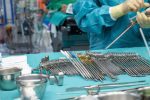
How to Become a Morgue Assistant
Taking care of people takes a very special type of person. Someone who enjoys putting other first and upholding their…

How to Become a Morgue Technician
If you have an inquisitive mind and an interest in science and the human body, then a job as a…

How to Become a Mortician
A mortician prepares the dead for burial, arranges funeral services, and communicates with a family to ensure their wishes are…

How to Become a Mortician Assistant
Mortician Assistants provide support to Morticians and provide end of life services for deceased individuals and their families. Morticians may…
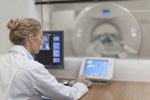
How to Become an MRI Technician
Magnetic Resonance Imaging (MRI) Technicians are specialized Radiologic Technicians that handle sophisticated medical equipment in order to create images of…

How to Become a Neurologist
If you’re interested in medicine and health then you might like to become a neurologist. Neurology is the study of…
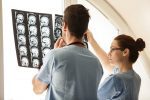
How to Become a Neurosurgeon
Neurosurgeons are professionals who have experience and knowledge in spinal cord, central nervous system and brain disorders and illnesses. These…

How to Become a Nurse Practitioner
Nurse Practitioners are professionals who can provide specialty and primary health care to patients. They work very closely with patients…

How to Become an OBGYN
An OBGYN is an Obstetricians and Gynecologist doctor who specializes in women’s health. Their specialization can range from preventative health…

How to Become an Obstetrician
Obstetricians are physicians who are experienced in treating pregnant female patients from the time of conception to shortly after giving…

How to Become an Oncologist
An oncologist is a medical doctor who specializes in the diagnosis and treatment of cancer. If you are looking for…
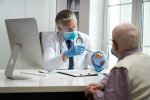
How to Become an Ophthalmologist
An ophthalmologist is a specialist in diseases of the eye, and works to both diagnose problems and treat them with…

How to Become an Optometrist
If you’re interested the eye and have a strong interest in a career in medicine, then you might like to…
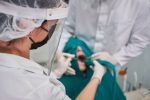
How to Become an Oral Surgeon
Oral Surgeons are professionals who are experienced professionals in the dentistry field. These professionals are experienced in operating on patient…

How to Become an Orthodontist
An orthodontist is a specialized dental practitioner who diagnoses and treats misaligned teeth. If you are interested with health, enjoy…
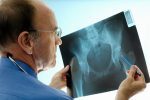
How to Become an Orthopedic Surgeon
Orthopedic Surgeons are healthcare professionals that are experienced in treating patients having problems with their musculoskeletal system. They are responsible…

How to Become an Orthopedist
Orthopedists are specialized physicians that focus their careers on treating and diagnosing individuals experiencing musculoskeletal problems. The musculoskeletal system includes…

How to Become an Osteopath
Osteopaths, also known as Osteopathic Doctors (D.O.), perform medicine using the principle that patients should be treated as a whole,…

How to Become a Paramedic
A paramedic provides a range of medical services to an injured person in the event of an emergency. Out of…

How to Become a Pathologist
If you are interested in science and medicine, then you might like to become a pathologist. A pathologist is a…

How to Become a Pathology Assistant
Someone not squeamish and unfazed by messes may find working with the human body an easy task to accomplish. Looking…

How to Become a Pediatric Nurse
Pediatric Nurses are health care professionals who focus on the health care of young patients up to the age of…

How to Become a Pediatrician
A pediatrician provides specialized medical care to children and teenagers. To become a pediatrician, you must first train to become…

How to Become a Pharmacist
A pharmacist is a health care professional who prepares and dispenses drugs, and also gives health advices to clients. You…

How to Become a Pharmacy Technician
A pharmacy technician works under the supervision of a licensed pharmacist to provide medication, health care products, as well as…

How to Become a Phlebotomist
It takes a special person to make a living as a Phlebotomist. This is because Phlebotomists are responsible for withdrawing…

How to Become a Physician
A physician applies the scientific study of medicine to diagnose and treat illnesses, injuries, and other threats to people’s health….

How to Become a Physician Assistant
The healthcare industry is currently experiencing one of the fastest sector growths and has caused a demand for professionals such…

How to Become a Plastic Surgeon
Plastic surgery might be the most lucrative specialty in the surgical field because of its high wages. Plastic Surgeons can…

How to Become a Podiatrist
Podiatrists are licensed medical practitioners who perform medical treatment on the feet and the lower part of the legs. They…

How to Become a Primary Care Physician
Primary Care Physicians are medical doctors who provide generalized and comprehensive health care services to patients. Primary Care Physicians may…

How to Become a Psychiatrist
A psychiatrist is a medical doctor who has gained a specialization in the field of mental health. They work one…
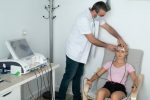
How to Become a Radiation Therapist
Radiation Therapists are a part of an oncologist team that helps with the medical treatment of a cancer patient. An…

How to Become a Radiologist
A radiologist is a medical doctor who specializes in medical imaging. When you become a radiologist you will use a…

How to Become a Radiology Assistant
The Radiology Assistant position is the most advanced position one can seek in Radiology, not including the Radiologist Physician career….
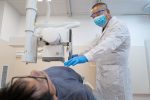
How to Become a Radiology Technician
Have you ever considered what it would be like to take pictures of the unseen world? How about being a…

How to Become a Reflexologist
Reflexologists are medical professionals who provide therapeutic services to patients suffering from a wide range of disorders, illnesses or concerns….

How to Become a Registered Nurse
Working as a registered nurse can be very rewarding. You’ll have an important role in improving and maintaining your patient’s…

How to Become a Residency Coordinator
A Residency Coordinator is a healthcare professional who is experienced in running an assisted living or residential care facility. Assisted…

How to Become a Respiratory Therapist
A respiratory therapist tests, diagnoses, and treats patients suffering from an illness which affects breathing and lung capacity. They work…

How to Become a Sonographer
Sonographers, also known as Diagnostic Medical Sonographers, are specialized health care workers who are experienced in performing diagnostic medical sonographies,…

How to Become a Surgeon
Surgeons are medical doctors whose specialty is performing medical operations as a form of treatment. If you are interested in…
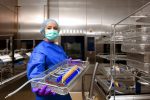
How to Become a Surgical Technician
You may think of an operating room as a bloody mess because of what goes on in there, but in…

How to Become an Ultrasound Technician
An ultrasound technician uses high frequency sound waves to form an image of the interior of a patient’s body. By…

How to Become an X-Ray Technician
If you’re interested in health, are good with technology, and want to work with people then you might like to…
Work Environment
Medical professionals may work in hospitals, clinics, nursing care facilities, physician offices, and other healthcare providers.
According to the Bureau of Labor Statistics, physicians and surgeons held around 727,000 jobs in the United States in 2020, while registered nurses held 3.1 million jobs.
There were 335,000 medical dosimetrists, medical records specialists, and health technologists and technicians in the United States, most of them working in hospitals, outpatient care centers, or offices of physicians.
Health information technologists, medical registrars, surgical assistants, and healthcare practitioners and technical workers held 81,400 jobs, most of them working for general medical and surgical hospitals, in offices of physicians, or the field of educational services.
Career Path
The career path for a medical career varies depending on the position.
If you want a career in the medical field, taking classes in anatomy, biology, or chemistry in high school is a good idea.
There are professions, such as a dental assistant or medical assistant, that can be practiced with a diploma or certificate that can usually be obtained in 1-2 years.
The curriculum varies depending on the type of credential one is seeking.
Accredited programs usually include classroom and laboratory work and a portion of supervised practical experience.
Registered nurses need around four years of post-secondary training consisting of a bachelor’s of science degree program or an associate’s degree in nursing.
Diploma programs in nursing are also available at hospitals or medical centers and are usually 2 to 3 years long.
Master’s degree programs and accelerated programs are also available for those who want to become registered nurses and already have a bachelor’s degree in another field.
Registered nurses need a nursing license issued by the state where they want to practice.
To become licensed, nurses must graduate from an accredited nursing program, and they must pass the National Council Licensure Examination.
Some registered nurses advance to a nurse anesthetist, nurse-midwife, or nurse practitioner position (also known as advanced practice registered nurses – APRN) if they continue their training and earn a master’s degree or a doctoral degree.
APRNs are allowed to prescribe medications in many states and are typically paid more than registered nurses.
Physicians and surgeons need many years of training beyond high school.
First, they have to earn a bachelor’s degree that can be obtained in four years.
Although there are no specific undergraduate degree requirements, medical school applicants usually take classes in biology, physical science, and other healthcare-related subjects.
The next step is to finish medical school, which takes four more years.
The admission process to a medical school is highly competitive, and applicants need to submit their college transcripts, scores from the Medical College Admission Test, and letters of recommendation.
Some schools offer combined undergraduate and medical school programs that last between 6 and 8 years.
The first years of medical school focus on classroom classes, laboratories, and small groups where students learn about anatomy, biochemistry, pharmacology, physiology, medical ethics, and medicine-related laws, among other topics.
The last years of medical school are spent working with patients under the supervision of experienced physicians.
Then, depending on the specialty, physicians need between 3 and 9 years spent in an internship and residency program.
Physicians who want to subspecialize in areas such as infections diseases need to complete a fellowship that lasts between 1 to 3 years.
All physicians need a license before being allowed to practice, but requirements vary by state.
Licensure requirements include completing the required educational programs and passing a standardized national exam.
Medical Doctors take the U.S. Medical Licensing Examination, while Doctors of Osteopathic Medicine are required to take the Comprehensive Osteopathic Medical Licensing Examination.
M.D.s and D.O.s who choose to seek board certification in a specialty need to spend up to 9 years in residency training.
After completing the residency period, candidates for board certification have to pass a specialty examination from a medical certifying board.
Certification is also sometimes required for other medical workers.
For example, dental assistants who want to perform coronal polishing or other special duties need a certificate from the Dental Assisting National Board- a credential that can be earned after passing an exam.
This section also includes medical billers and coders.
Health information technologists and other technical workers usually need a postsecondary certification before entering an occupation in this field.
Some positions may require an associate’s or bachelor’s degree.
Postsecondary programs in health information technology usually include classes in medical terminology, classification and coding systems specific to the medical field, health data requirements and standards, and more.
Employers may prefer candidates who have a certification as Certified Professional Coder, Certified Coding Associate, or Registered Health Information Technician.
Besides the formal training, good workers in the medical field need some personal skills:
- Compassion is important for any medical career, especially for those who work directly with patients or interact with patient families.
- Dexterity is important, especially for those who perform procedures on patients.
- Patience is also required when working with patients because sometimes patients are scared or uncooperative, and those who perform medical procedures have to remain calm in any circumstance.
- Physical stamina is also needed because most medical workers have to spend many hours on their feet, and some have to help patients who cannot move.
- Physicians and surgeons, in particular, have to be detail-oriented to ensure that the patients receive the appropriate treatment.
- Communication skills are also needed when talking to patients and their families.
Salary Information
According to the Bureau of Labor Statistics, the median annual wage across all healthcare professions in the United States is $69,870, as of May 2020, higher than the median wage for all industries- which was $41,950.
However, salaries in this field vary widely, and some medical professionals earn much less than the national average.
For example, the median annual wage for healthcare support occupations, such as home health aides or medical transcriptionists, was $29,960.
Dental assistants reported a median annual wage of $41,180 in 2020, close to the national median across all industries.
As a dental assistant, you can make anywhere between less than $29,000 and more than $58,000 depending on experience level, education, region, and employer.
The median annual wage for physicians and surgeons was calculated at $208,000, but salaries vary based on the medical specialty.
The highest-paying medical profession in 2020 was the anesthesiologist occupation- with a median annual wage calculated at $271,440.
Surgeons were remunerated $251,650 per year, while obstetricians and gynecologists made $239,120 per year, on average.
Pediatricians, on the other hand, were remunerated with $184,570 per year, on average, which is lower than the median for all physicians and surgeons.
Genetic counselors earned $85,700, on average, with salaries ranging between less than $67,000 and more than $126,000 as of May 2020.
The median annual wage for health information specialists was $51,840, with salaries ranging between less than $30,000 and more than $105,000.
The federal government is one of the highest-paying fields for health information technologists, with the median salary estimated at $99,750.
Technologists who worked in offices of physicians, on the other hand, made $46,590 per year, on average.
Job Prospects
According to the Bureau of Labor Statistics, employment in the healthcare field, in general, will grow 16 percent by 2030, resulting in 2.3 million new jobs.
The most spectacular growth rate is estimated for nurse anesthetists, nurse midwives, and nurse practitioners- professions that will grow 45 percent by 2030.
A higher-than-average growth rate is also estimated for genetic counselors, a profession that will grow 26 percent over the decade.
Overall employment for physicians and surgeons will grow 3 percent from 2020 to 2030, with approximately 22,700 openings expected to occur each year, on average.
The demand for physicians overall is projected to grow mainly due to the growing and aging population- a phenomenon that will lead to an increased rate of chronic diseases.
However, employment prospects vary depending on the physician’s specialty.
The demand for psychiatrists will grow 13 percent over the decade, while the demand for surgeons will decrease by 3 percent.
Employment will increase for dental assistants, a profession that will grow 11 percent by 2030.
Dentists will see job growth of 8 percent, over the decade, with 5,000 new jobs expected to appear each year.
Employment prospects will also grow for medical records and health information specialists with an expected growth rate of 9 percent.
This growth is explained, in part, by the widespread use of electronic health records and the increase in the older population.
Much of the employment for some medical professions will also result as the nation recovers from the COVID-19 recession.
Frequently Asked Questions
How long does it take to start a career in the medical field?
The answer to this question varies depending on the profession you are targeting.
Some medical professions require less than two years of training beyond high school.
However, if you want to become a physician or a surgeon, you will need between 11 and 17 years of training, consisting of a bachelor’s degree program, medical school, and an internship or residency.
What prospects do medical professions have?
Most medical professions will grow in the next decade, but rates vary depending on the specialty and the occupation.
The demand for nurse anesthetists, nurse midwives, and nurse practitioners will grow 45 percent from 2020 to 2030, while the demand for physicians and surgeons, in general, will grow only 3 percent.
How do I know if a career in the medical field is right for me?
If you’re passionate about science and you’re willing to spend several years in post-secondary training, a career in the medical field can be a right fit for you.
Besides specialized training, medical professionals also need some personal assets.
Those who work directly with patients need compassion, communication skills, as well as patience, and attention to detail, among other skills.
What is the highest-paying medical profession?
Although salaries in the medical field vary depending on the specialty and the occupation, physicians and surgeons reported some of the highest median salaries in the field.
Anesthesiology is the medical specialty with the highest median salary.
Anesthesiologists earned $271,440 per year, on average, as of May 2020, according to the Bureau of Labor Statistics.









